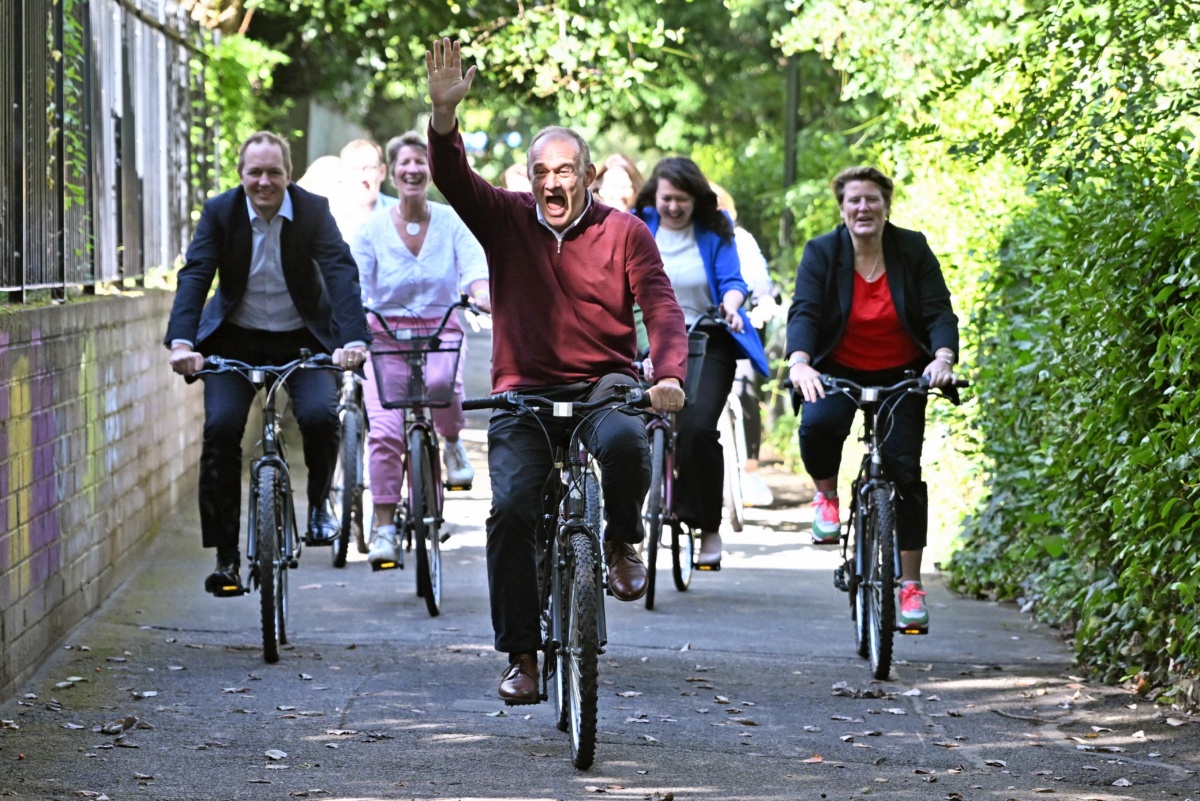
After he became the leader of the Liberal Democrats, the late Paddy Ashdown used to joke that the party’s vote share was only indicated by an asterisk on polls – it was that low.
Through a relentless focus on building up a councillor base and winning by-elections, Paddy made the Lib Dems a force to be reckoned with. In 1997, the party won 46 MPs, and continued to build from there, putting it into the position to play kingmaker in 2010 and enter government. We all know the story of the next 14 years.
So, you’d be forgiven for wondering how the party managed not just to turn things around, but win what is a record number of MPs since the Liberal Party and SDP merged in 1988, and in one single election.
Winning *here*, not over there
In many ways, it’s a simple answer. The Lib Dems distributed their vote incredibly efficiently in seats where it was really needed – rather than trying to win votes broadly across the country. The party clearly positioned itself as best-placed to beat the Conservatives in a swathe of seats where it came second last time. That message was rammed home through local election results, by-election wins, canvassing, leaflets, digital ads, and media stories that emphasised this approach.
The Liberal Democrats’ campaign machine, directing volunteers, overseeing seat teams and churning out literature, was fine-tuned ahead of the campaign. Lessons were learned in by-elections and recent local elections, and they meant that the party had recent voting intention data in many key areas from knocking on thousands of doors, and volunteers who knew the drill and had tasted success.
That was all backed up by incredible discipline at a local and national level – activists from non-target seats were in no doubt about where they were needed, and went there instead of campaigning in their patch. In London, volunteers from across the capital supported in Wimbledon and ensured Labour could not split that anti-Conservative vote.
The Ed factor
A local-first approach is all well and good, but the UK air war is still important; national broadcast media attention, in particular, massively increases a party’s reach and cut through with the public. There are specific rules around balance during election periods, meaning third and small parties’ responses to news and developments are routinely featured in reporting. But the Lib Dems still needed to be distinct and be noticed as a brand by voters.
Into the breach stepped leader Ed Davey. Yes, the ‘stunts’ were a risk. But they paid off. They gave broadcasters and newspaper editors great images to put alongside their political coverage, and the Lib Dem leader saw a rapid increase in name recognition.
The visual campaigning was key, but what made it truly effective was combining it with Davey’s personal story of being a carer at home. The party’s first party political broadcast, documenting how Ed cares for his disabled son, John, not only highlighted how the Lib Dems were talking about care in a way the other parties weren’t, but connected voters with Ed and the party on an emotional level. It showed clear motivation behind the campaign’s policy priorities.
There is no doubt that this media approach, combined with a relentless focus on a handful of policy areas, enabled the party to cut through with the public.
When a plan comes together nicely
The aim of this combined campaign and media strategy? That in the days coming up to polling day – and for many on the day itself – when voters in Lib Dem targets were making up their minds on who to vote for, they would know that if they wanted to unseat the Conservatives, they had to vote for the Liberal Democrats.
All of the leaflets, digital ads, media stories, ‘stunts’ and personal messages came down to millions of micro-moments as people opened a ballot paper and put a cross in a box.
What next for the Lib Dems?
The challenge for the Liberal Democrats now is consolidating their hold on these new gains. The vast majority of its MPs are new. The central party will spend the coming months ensuring these newbies get settled and set up, especially locally.
Being in opposition to a Labour government in Parliament is a very different dynamic. Expect the party to focus on local issues and those priorities it campaigned on, especially in the short term. Representing swathes of southern English shire seats will continue to change the character of the Lib Dems and their national politics.
But with an activist base that’s more left-wing and progressive than its new voting coalition, Ed Davey’s challenge will be to hold everything together and resist the temptation to outflank Labour on the left on many issues. Looking to replace the Conservatives on the centre-right would be equally difficult, given the membership’s make-up.
The future is full of opportunity, but also political risks. Fundraising will become easier, and their regained status as the third-party in the Commons will give them more representation in debates and on committees. The question now is how they choose to use it.
The author worked for the Liberal Democrats during the General Election campaign.
Read more Insights & News
